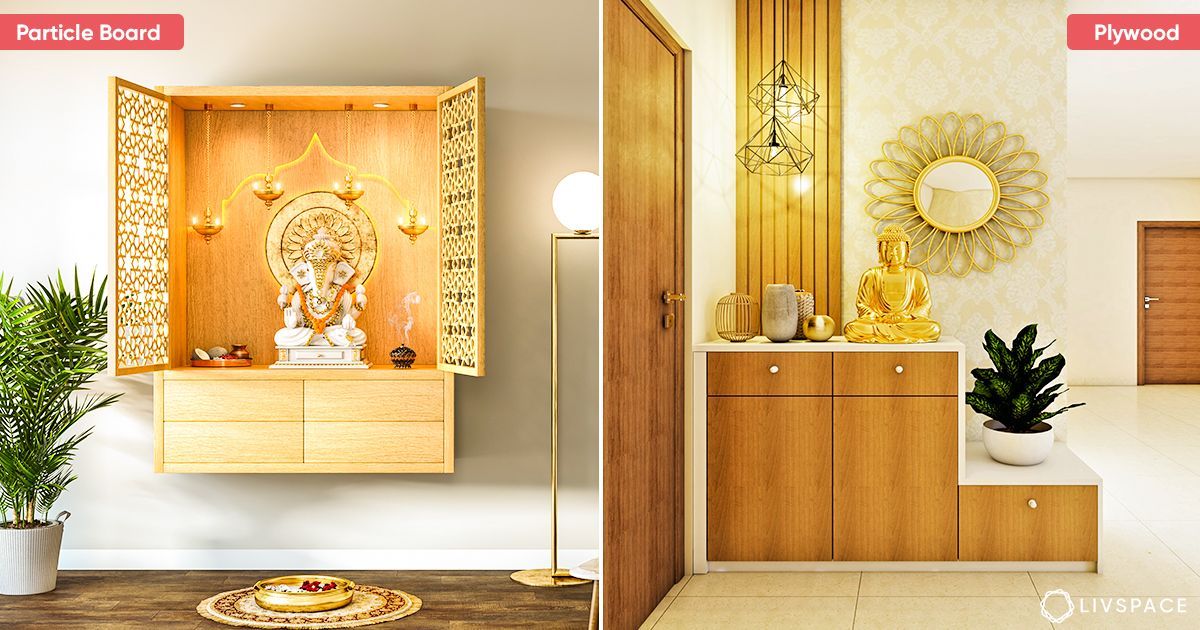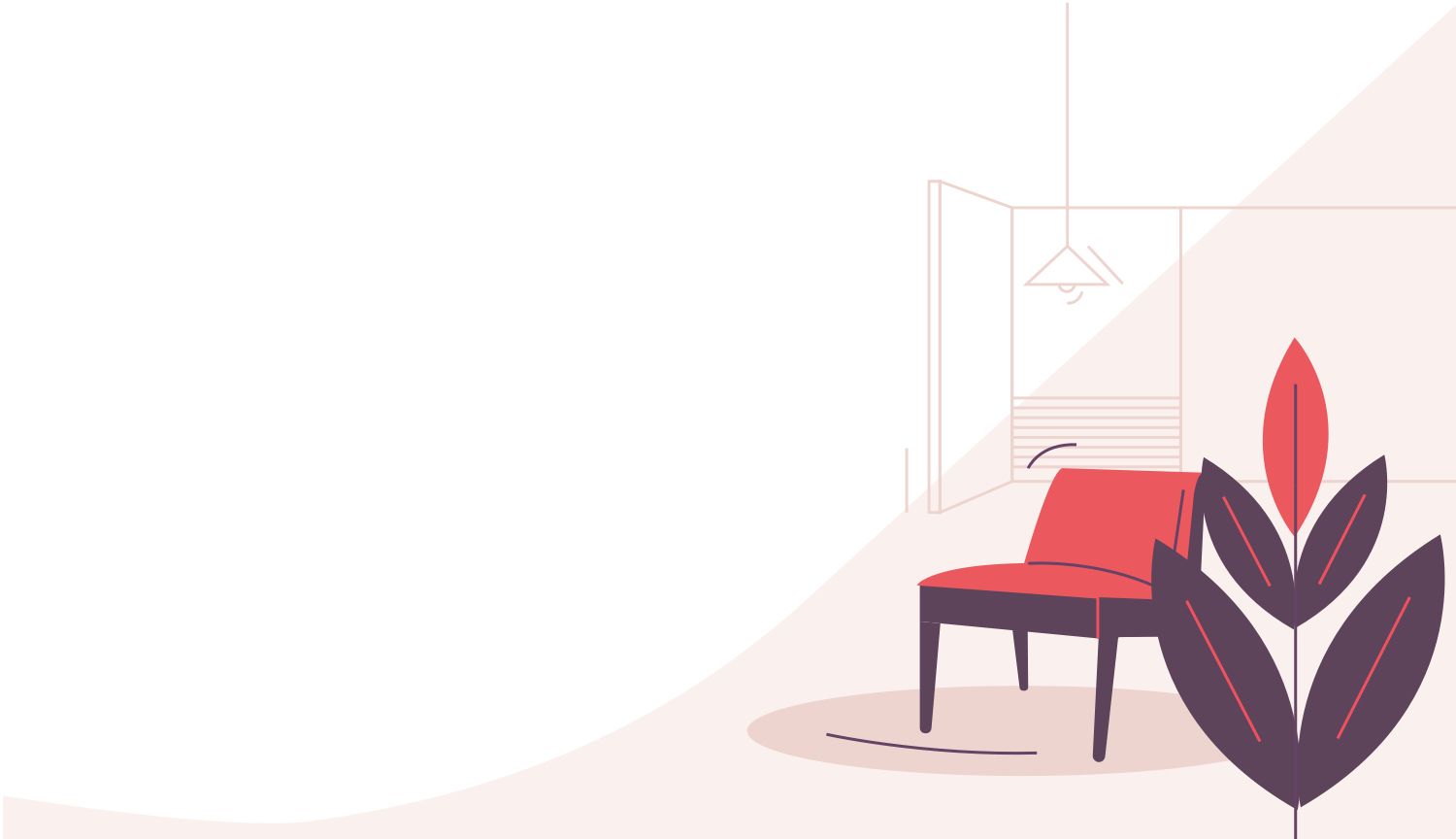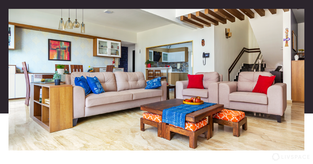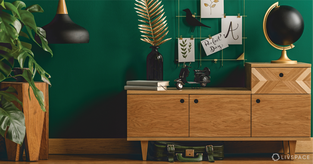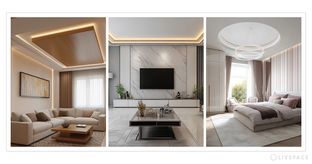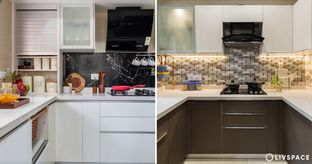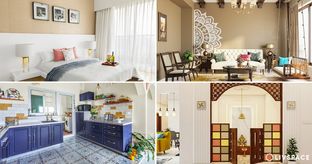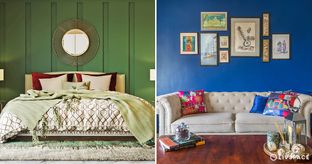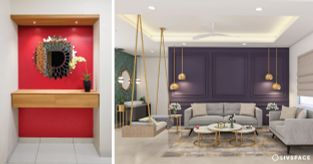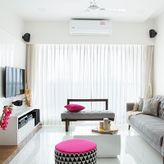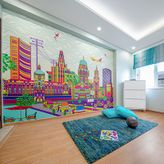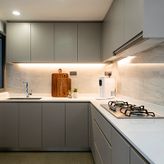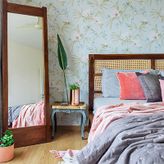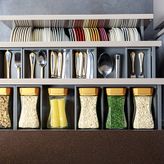In This Article
- What’s the Difference Between Plywood and Particle Board?
- What Is Particle Board?
- What Are the Advantages and Disadvantages of Particle Board?
- Where to Use Particle Board?
- What Is Plywood?
- What Are the Advantages and Disadvantages of Plywood?
- Where to Use Plywood?
- The Verdict on Particle Board vs Plywood
- How Can Livspace Help You?
Ever so often we face the challenge of choosing between various materials for our furniture. There are so many things that you have to consider, such as the cost, durability, aesthetics, and so on. Considering the many materials available in the market, it can be hard to differentiate between all of them. So, if you find yourself wondering what the difference between plywood and particle board is, we can help break it down. This brings us to the question: particle board vs plywood: which is better?
Though similar in nature, the usage or application of either of these materials depend on a lot of factors. While both materials are available in similar sheets and varying thickness, it helps to know the pros and cons each of them have. Use this guide as a reference point for everything you need to know about particle board and plywood.
What’s the Difference Between Plywood and Particle Board?
| Particle Board | Plywood | |
| Composition | Made using wood chips, saw mill shavings, and adhesives | Made of thin sheets of wood glued together |
| Strength | Low strength | High strength |
| Screw Holding Capacity | Relatively soft and brittle, not as good for holding nails | Stronger structure, hence suitable for holding nails and screws |
| Finish | When stained and lacquered, it looks smooth and flat | Has rough fibres that require sanding before finishing |
| Cost | ₹30 to ₹40 per sq. ft. | ₹40 to ₹80 per sq. ft. |
What Is Particle Board?
Of all the core materials that we offer, particle board is the most inexpensive. Almost entirely manufactured from recycled timber wood, it’s eco-friendly and sustainable.
But what exactly is the definition of particle board? It’s a wood-based material that is made by compressing wood chips with the help of glue. It’s made by heat pressing these particles of timber waste along with resin to form a plank.
The wood chips in the surface layer are thinner than those in the middle layer, so the surface of the particle board is denser and more compact than the middle. In fact, particle board can be very useful to have in kitchens as it’s relatively lightweight. Find out more about this material in the video above.
What Are the Advantages and Disadvantages of Particle Board?
| Advantages of Particle Board | Disadvantages of Particle Board |
| It has a smoother surface than that of plywood | It’s not as strong or durable as plywood |
| It’s made using scraps of lumber products, making it an eco-friendly material | Can be relatively soft or brittle, making it hard to drill screws into |
| Can be comparatively lightweight and easy to move around | It’s not moisture-resistant and can swell upon exposure |
| It’s relatively more cost-effective compared to plywood | Not ideal for heavy-duty use |
Also Read: What Kind of Wood or Wood-Like Materials Are Used in Home Interiors and Why?
Where to Use Particle Board?
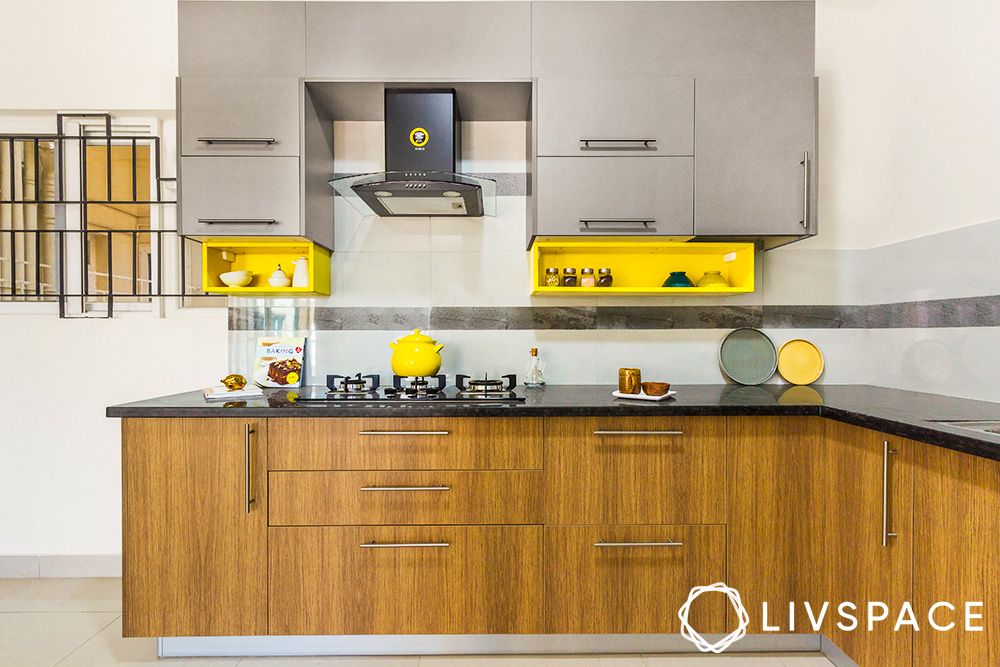
Now that you know what it has to offer, let’s look at the uses of particle board and where they work best. Being a versatile material, you can use it in numerous ways at home. You can use it in false ceilings, wall units and panelling, and even as the carcass of your modular furniture.
The most exciting part about this material is that it can be used for a lot of DIY projects too! This is because the material is easily available and relatively inexpensive. So, if you love doing up your home on your own, then this material can be your go-to option.
What Are the Grades of Particle Board?
Particle board is available in different grades that are defined by their usage and application. Here are some grades that are commonly available:
- Industrial Grade (M2 and M3): Can be used in cabinets, furniture and fixtures
- Commercial Grade (MS): Can be used in cabinets and laminated panels
- Countertop Grade (M2): This grade can be used in post-formed countertops and laminated panels
- Shop Grade (M1): Economy panel for non-structural applications
What Are the Types of Particle Board?
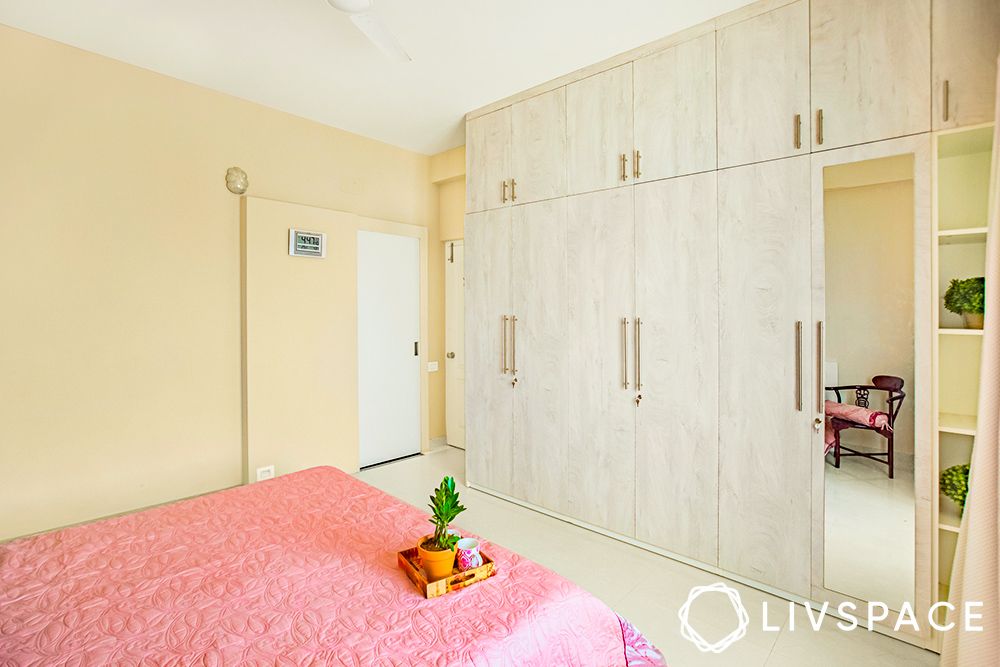
- Single-Layer: Same size wood particles are pressed together to create a flat yet dense board. It can be water-resistant, but is not waterproof.
- Three-Layer: Similar to a club sandwich, this type of particle board holds a thick layer of wood particles between two thin layers of smaller particles.
- Graded-Density: Similar to the three-layer version, graded-density particle board comprises a coarse layer of wood particles sandwiched between two fine layers of particles. You can use this type of material to make cabinets and other furniture pieces.
- Melamine Particle Board: Made by infusing melamine into the board’s surface, melamine boards are moisture-resistant. You can use this type of particle board in modular kitchens, wall panelling, and furniture pieces.
- Cement-Bonded: As the name suggests, the board uses different types of cement as a bonding agent. This helps keep the material resistant to moisture, fire, termites, and even rot.
- Veneered Particle Board: A thin layer of veneer sits atop the surface of this type of board, giving it a wood-like appearance. The veneer helps make the board slightly more long-lasting, as it resists warping.
- Laminated Particle Board: If aesthetic quality is on your mind, this type of material can get the job done. Similar to veneered particle board, this material uses a layer of laminate on its surface. These laminated surfaces are also more durable.
What Is Plywood?

Plywood is an engineered wood material made up of fine layers or strands of wood veneers. These piles of wood veneers are bound by placing the wood grains together. The term plywood was born from the layers being referred to as “piles”.
The more the layers, the thicker the plywood sheet will be. In construction, it can come in use for walls, floors, roofs, and stairs. Plywood is also extensively used in furniture making.
What Are the Advantages and Disadvantages of Plywood?
| Advantages of Plywood | Disadvantages of Plywood |
| Plywood is relatively stronger than other wood-based sheet products, like MDF | It can be a little expensive compared to other wood-based sheets |
| It has endless usage, both indoors and outdoors | The edges of plywood can look unfinished and need to be layered with either laminate or veneer |
| Different densities of plywood can be used for different purposes, making it a versatile material | Plywood can be a little difficult to cut and mould |
| Plywood is a great material for intricate wood work that can also hold screws well | You might need laminate sheets to finish commercial grade plywood |
Also Read: What is MDF Material? Is MDF Good for Home Interiors?
Where to Use Plywood?
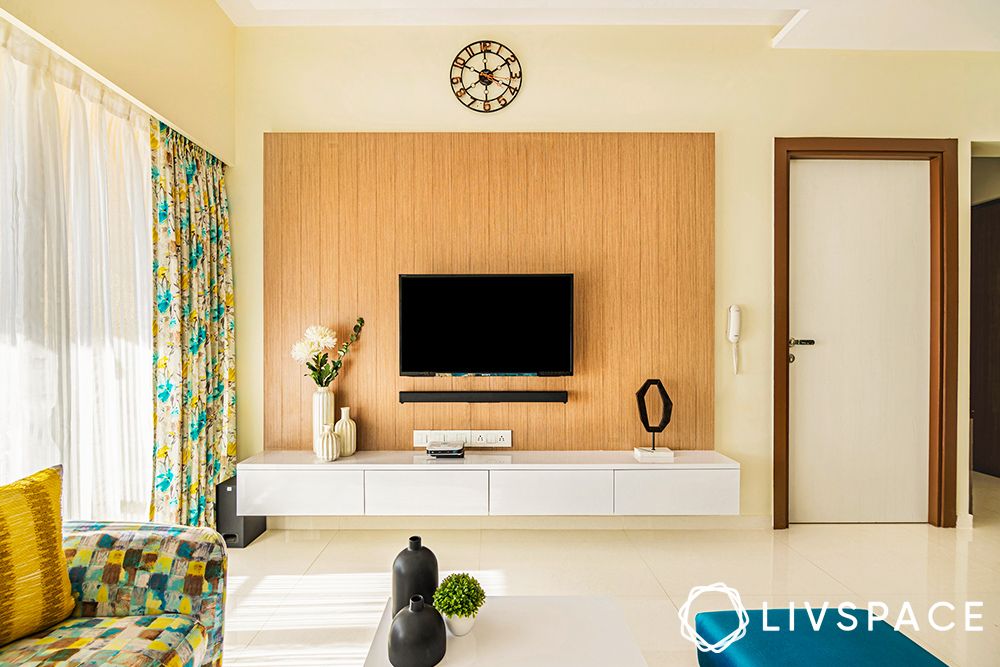
We’ve already mentioned that plywood can be the more durable option, but do you know where to use it at home? We can help give you an idea of where this material works best.
You can use plywood in your floors, wardrobes, cabinets, doors, shutters, and walls. It can also come in handy for your headboard and footboard, wall panelling, and as a structure for upholstered furniture. To further enhance this miracle material, you can also treat it to be resistant to bugs, fire, mould, and water.
What Are the Grades of Plywood?
Grades help you differentiate between materials and help you make the best choice for your interiors. The number of defects and the work that goes into repairing the materials are the two things that determine its grade. Every material comes with a mark or stamp, making it easily identifiable. These are the grades that plywood is available in:
- Livspace HydraTUF ply: Capable of resisting swelling and water damage to a certain extent in humid conditions. However, this grade of plywood is not waterproof. It is best suited for interior furnishings that do not come in frequent contact with moisture.
- Livspace HydraTUF Plus ply: This type of material is better at resisting water damage compared to HydraTUF plywood. It is ideal for use in areas that are prone to moisture, such as balconies and kitchens.
- Livspace HydraTUF Max ply: Also known as marine grade plywood, this material is waterproof and is best used for marine woodwork. Though it is a superior grade of plywood, it cannot be used to make furniture for your interiors due to its tensile strength.
Types of Plywood You Can Consider for Your Interiors
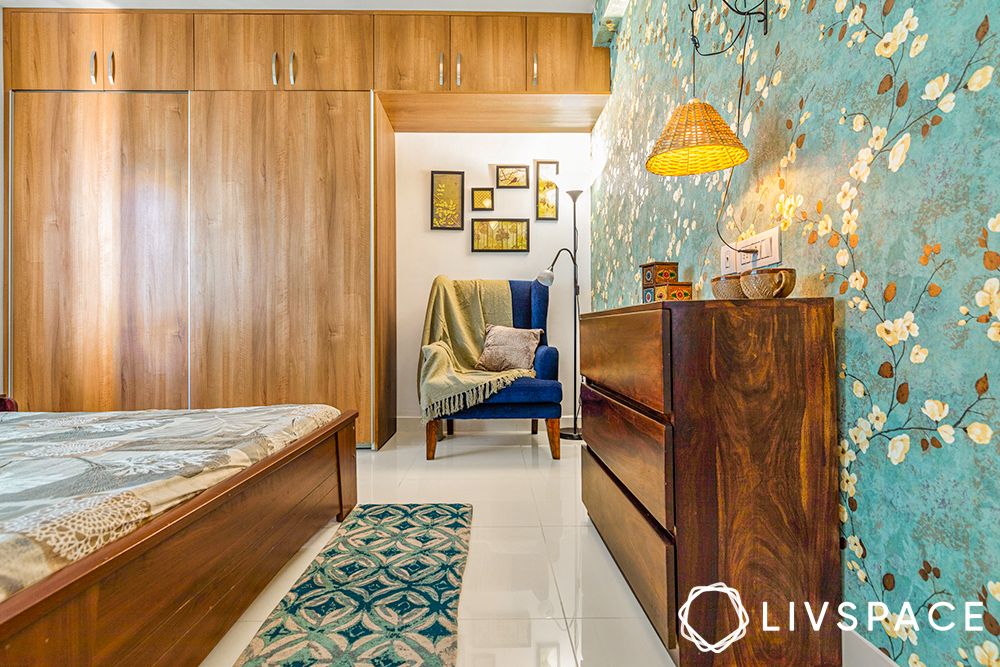
- Flexible Plywood: Much like its name, this type of plywood can be easily shaped. You can use it to round the edges of furniture or create softer designs.
- Soft Plywood: This type of plywood uses soft wood. However, don’t let the term “soft” fool you, as this type of plywood can be used to make durable fittings as well.
- Hard Plywood: As the name suggests, this type of plywood is on the sturdier side. You can use it for heavy-duty use but take note that this material can be relatively pricier.
- Tropical Plywood: Common to the Asian continent, tropical plywood offers superior strength compared to its counterparts.
- Aircraft Plywood: Another durable plywood material that offers premium qualities is aircraft plywood. It gets its name from being commonly used to make aeroplanes during the Second World War.
Which Material Is Easier to Maintain?
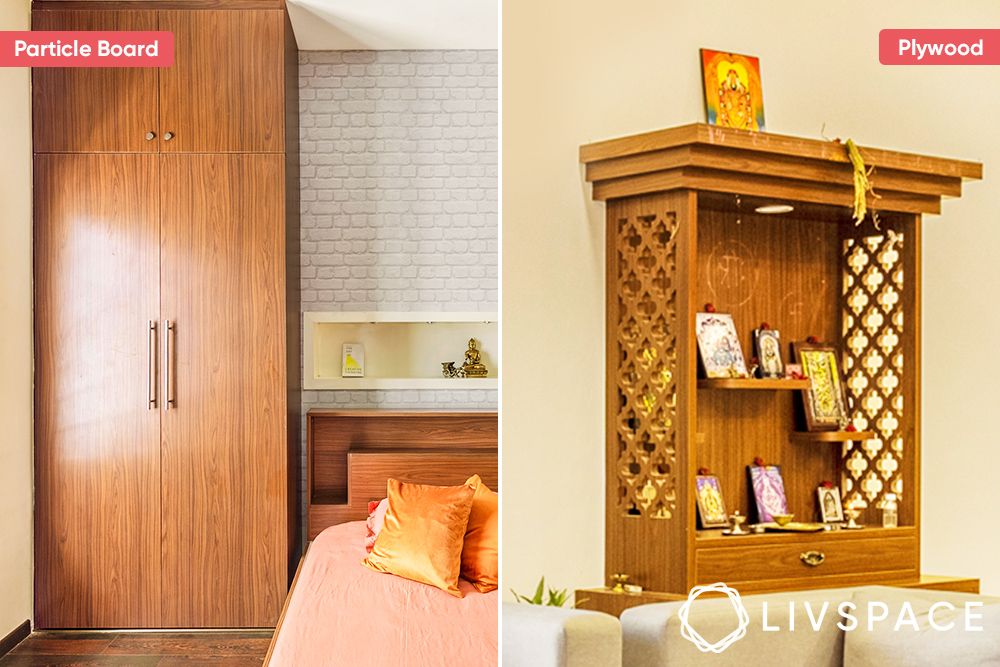
Since plywood is relatively more durable and long-lasting compared to particle board, it can be easier to maintain. This is because plywood is sturdier, ensuring that it won’t suffer damage while drilling into it or during heavy-duty use.
Moreover, both materials are usually finished with an overlay. The maintenance required for both these materials will depend on the type of finish you use.
What is the Cost of Both Materials?
- Particle board cost per square foot: ₹30 to ₹40 per sq. ft.
- Plywood cost per square foot: ₹40 to ₹80 per sq. ft.
The Verdict on Particle Board vs Plywood
Given the pros and cons, when you compare particle board vs plywood, the winner is definitely plywood. However, this doesn’t mean particle board is completely off the table, either.
Depending on your requirements, particle board can have its own set of unique uses and advantages. If those work for you, then you should definitely go for it. Always think long-term and weigh the pros and cons of both the materials before deciding.
How Can Livspace Help You?
We hope this guide helped you make an informed decision on whether to go for plywood or particle board. If you want beautiful interiors for your home, then look no further. Book an online consultation with Livspace today.
Have any thoughts or suggestions you’d like to share with us? We’re all ears! Drop us a line at editor@livspace.com.
Disclaimer: All contents of the story are specific to the time of publication. Mentions of costs, budget, materials, finishes, and products from the Livspace catalogue can vary with reference to current rates. Talk to our designer for more details on pricing and availability.
